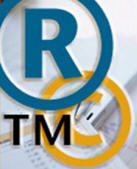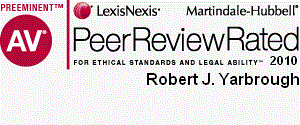Newsletter Issue 26 - April 2011
In this issue:
Branding is effective
Trade secret theft is a crime
Death of a Copyright Troll
Social Scientists Confirm What We Already Know -- Branding May Be Superficial, but it is Effective
 If
you needed confirmation about the value and power of branding,
here's what the the latest research into evolutionary biology has to
say about it. The Economist recently reported that two researchers
at Tilburg University -- Rob Nelissen and Marijn Meijers --
discovered that brand indicators may be more powerful than
previously imagined. The results of their research are to be
published in a forthcoming issue of the Journal of Evolution and
Human Behavior.
If
you needed confirmation about the value and power of branding,
here's what the the latest research into evolutionary biology has to
say about it. The Economist recently reported that two researchers
at Tilburg University -- Rob Nelissen and Marijn Meijers --
discovered that brand indicators may be more powerful than
previously imagined. The results of their research are to be
published in a forthcoming issue of the Journal of Evolution and
Human Behavior.
According to The Economist, the researchers performed various
experiments aimed at learning the influence of prestigious brand
clothing as suggested by their logos. Here's what they discovered.
In one experiment, volunteer subjects were shown pictures of a
person wearing a polo shirt that was digitally altered to include no
logo, a designer logo (Lacoste or Hilfiger), a non-luxury logo, or
no logo at all. The subjects were asked to rate the status and
wealth of the person wearing the shirt. When the designer logo
appeared, the subjects rated the person as a higher status and
wealthier than if no logo were present.
In a similar experiment, used to verify the findings of the first
experiment, a female assistant asked people in a shopping mall a
series of survey questions. On some days she wore clothing with the
designer logo and on other days she wore the exact same clothing
with no logo. When she wore a logo (Tommy Hilfiger), 52% agreed to
take the survey; when she wore no logo, only 13% agreed.
In yet another experiment, volunteers watched two videos of the same
person being interviewed for a job. When the interviewee wore a
shirt with a designer logo, the observers rated him as more suitable
for the job and even agreed to pay him a 9% higher salary.
According to The Economist article, designer logos also affected
charitable contributions. The experimenters found that women seeking
to collect charitable donations, received 34 Euro cents more when
they wore designer clothing than when their clothing was logo-less.
According to the researchers, it's all about signals. Designer
labels signal underlying quality analogous to the function of a
peacock's tail. The "peacock with the best tail gets all the girls."
To further test this phenomenon, the Tilburg researchers did the
following experiment:
"Each volunteer was given €2 in 10 cent coins and told he (or she)
could transfer as much as desired to an unseen partner, and that any
amount transferred would be doubled. If both partners transferred
all of their money, each would end up with €4. But because there was
no guarantee that the unseen partner would give back any money at
all, players tended to hedge their bets, and transfer only some
money."
"When shown a picture of their purported partner wearing a designer
shirt, volunteers transferred 36% more than when the same person was
shown with no logo (95 cents, as opposed to 70 cents). But when told
that the partner was wearing a shirt given by the experimenters, the
logo had no effect on transfers. The shirt no longer represented an
honest signal."
The study confirms another phenomenon, whereby a work of art is
valued by the name of the artist believed to have created it, not
the one who may have actually been the artist. The tendency for
humans to make superficial judgments about quality opens the door to
counterfeiters. "And people will willingly buy counterfeit goods,
knowing they are knock-offs, if they bear the right label." Unlike
Peacocks -- no counterfeit tails here -- humans have not evolved a
way to accurately determine underlying quality. Until they do (in a
few million years), marketers rejoice.
Adam Garson
Trade Secret Theft is a Crime.
As Mike Yu learned, industrial espionage
can earn you hard time. Mr. Yu is a Chinese national with permanent
residency status in the U.S. He worked as an engineer for Ford Motor
Company for ten years. Before departing Ford in 2007, Mr. Yu
purloined computer files containing several thousand of Ford's
sensitive documents, including design documents relating to engines,
transmissions and electrical power systems. He shopped the computer
files to four Chinese auto makers as part of a job search and
eventually worked for two of the Chinese auto makers.Mr. Yu was arrested in 2009 upon his return to the U.S. He subsequently pled guilty to two counts of theft of trade secrets. On April 12, 2011 the U.S. District Court for the Eastern District of Michigan sentenced Mr. Yu to almost six years in Federal prison. In the sentencing memorandum, Mr. Yu agreed that the stolen trade secrets were worth between 50 and 100 million dollars. Mr. Yu's conviction and sentence are cold comfort to Ford, whose trade secrets still are in the hands of its competitors.
Robert Yarbrough
Ask Dr. Copyright: The Death of the Copyright Troll?
Dear
Dr. C,
I heard that a copyright troll died recently...what's the scoop?
Sincerely,
Morbidly Interested
Dear Morbidly,
Righthaven LLC is a company that has brought hundreds of law suits
for copyright infringement against web sites, bloggers, and
mainstream media companies that have used content from the Las Vegas
Review Journal. Quotations as small as one sentence, even when
properly attributed to the Review-Journal, have brought demands for
payment and federal suit from Righthaven, which alleged that it
owned the rights to the paper's morgue (archive of past issues.)
Reportedly, Righthaven has received payments to settle these suits
that total several hundred thousand dollars.
In a legal counterattack, Democratic Underground, a target of a
copyright claim by Righthaven, used discovery to gain access to the
agreement between the newspaper publisher and Righthaven. (Righthaven
LLC v. Democratic Underground LLC, Civ. Action No. 2:10-cv-01356, D.
Nevada.) That agreement granted Righthaven LLC only the right to
sue, but not ownership of the copyrighted works. United States
District Judge Roger Hunt ordered publication of the agreement, and
those that have been sued by Righthaven have now been given the tool
to bludgeon the troll. You see, under existing law, having a bare
right to sue is not sufficient basis for standing before the court,
and each defendant may now move to have cases dismissed on that
ground. Expect to see a LOT of motions filed.
This leaves the fundamental question of what constitutes fair use of
a newspaper's content in today's digital world. Is it sufficient to
include the link (URL) with the text of the story posted or emailed?
Is it permissible only to post the link itself? Is there some middle
ground? Unfortunately, Congress was very vague about what would be
considered "fair use" when it wrote the Copyright Statute, and our
courts have not provided much precision in the more than thirty
years since. This important question must be answered, but it may
take many more cases, at great cost in time and expense, before we
have a workable and consistent answer. For now, the safe course is
to quote only a few sentences, at most, and provide a reader with
the opportunity to view the original article using a link (such as,
"To read the rest, click here...")
Is Righthaven LLC totally out of business? Not yet, and our guess is
that they will come up with a new agreement and be back in court
before the ink is dry. Word to the wise: quote carefully, and if at
all possible, do not quote that paragon of journalistic excellence,
the Las Vegas Review Journal.
Lawrence Husick

